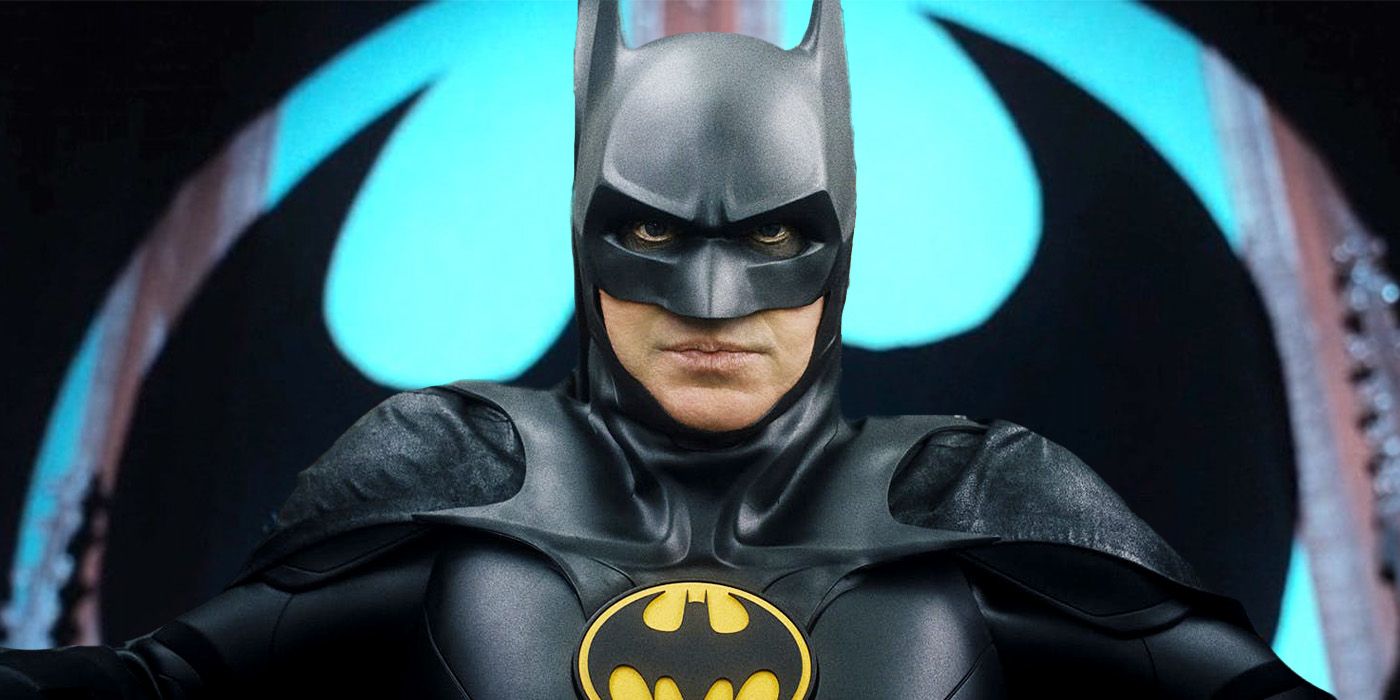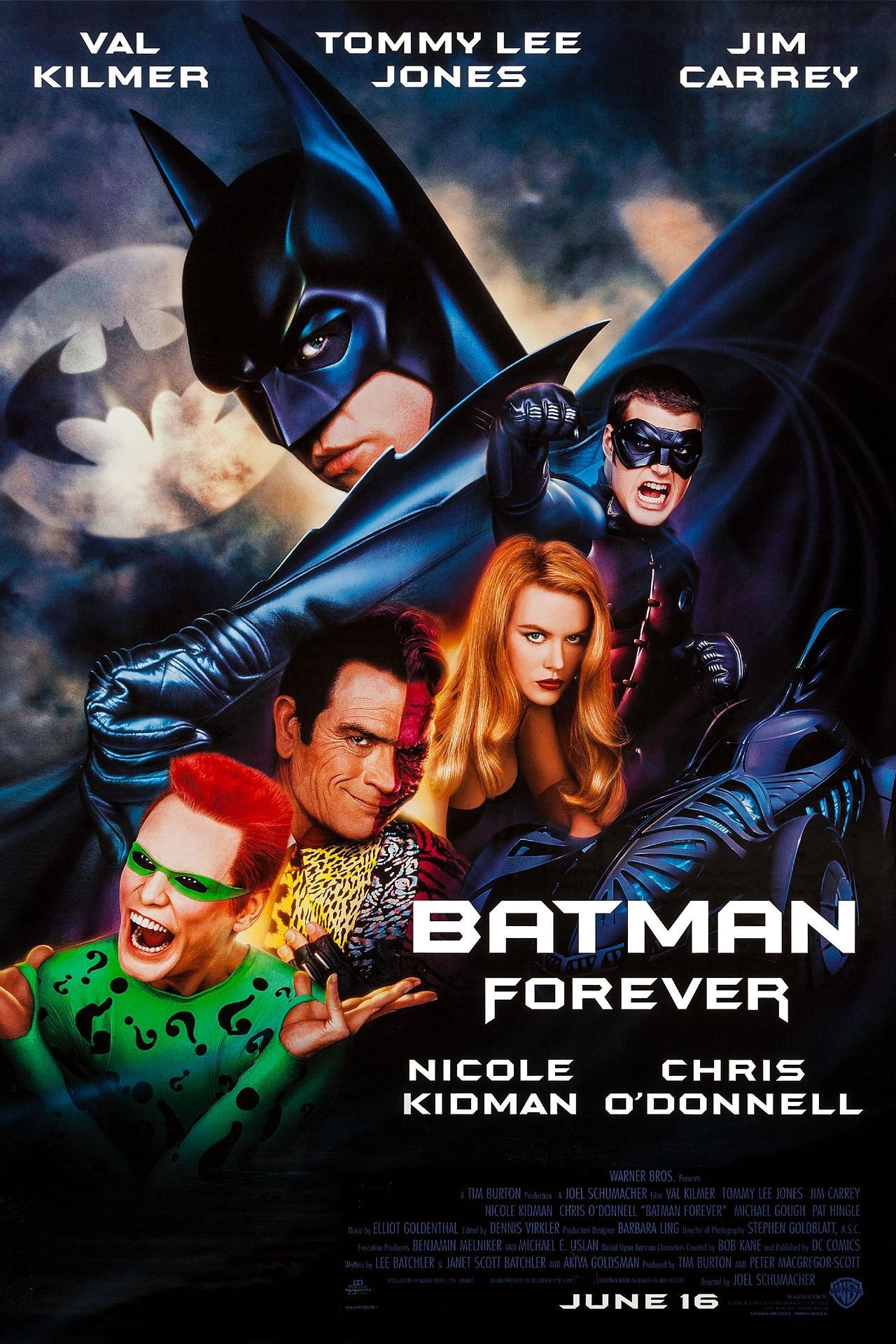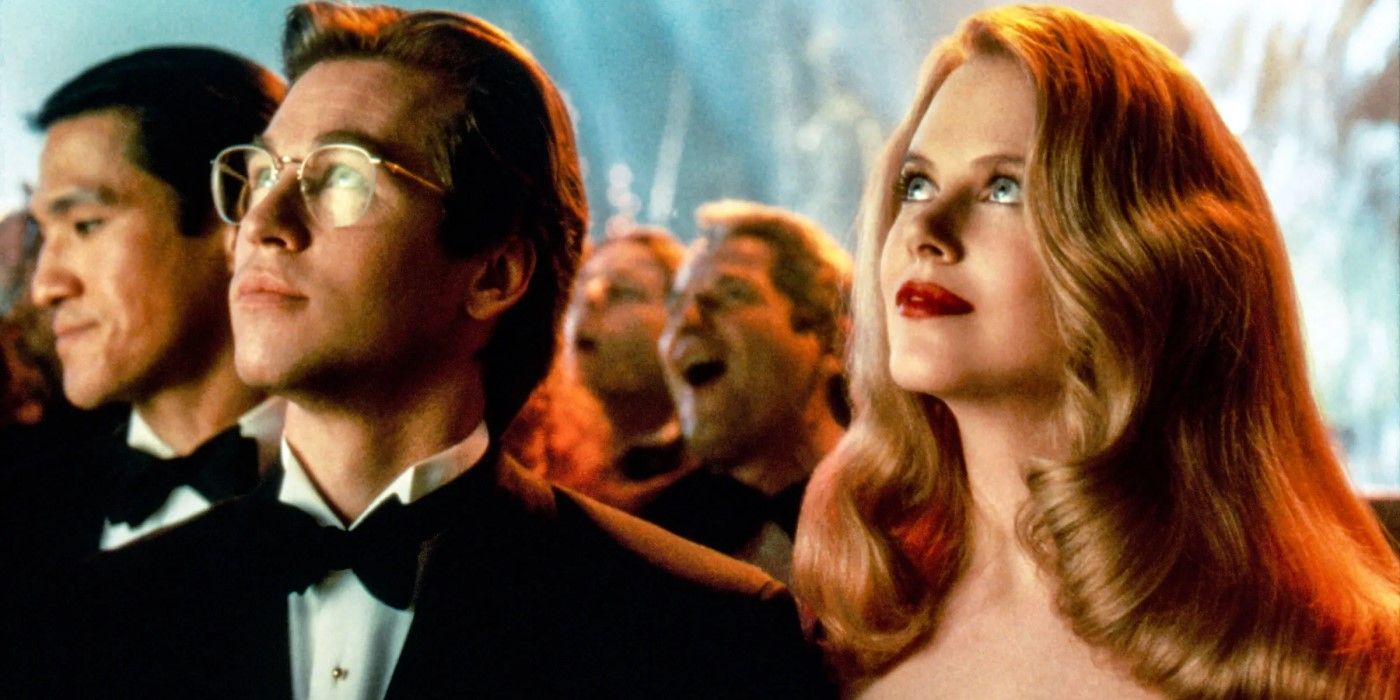It’s hard to believe that Batman Forever came out nearly 30 years ago (it hit theaters in June 1995), but it’s even harder to believe that Joel Schumacher’s director’s cut of the film exists somewhere. Though Forever has been heavily criticized by fans for its lighter tone compared to the first two Tim Burton movies, Val Kilmer’s performance has been generally praised. But there’s one scene, a scene that didn’t even appear in the finished cut of the film, that really seals Kilmer’s Bruce Wayne as the real deal. If you’ve never had the pleasure of diving deeper into Batman’s inner monologue (or, dialogue if we consider Bruce and Batman separate personalities), then this Batman Forever scene may just change your perspective on this Batman movie.
‘Batman Forever’s Deleted Scene Explored Bruce Wayne’s Psychology
After the kidnapping of his latest flame, Dr. Chase Meridian (Nicole Kidman) by the Riddler (Jim Carrey) and Two-Face (Tommy Lee Jones), Bruce Wayne recovers from being shot by the criminal duo. The Riddler, having discovered Bruce’s dual identity as Batman, found his way into the Batcave and destroyed much of the Caped Crusader’s crime-fighting equipment. In the aftermath, a dazed Bruce recuses himself to the dark recesses of the caverns below Wayne Manor where, in a very Empire Strikes Back-like sequence, he confronts his demons and his guilt. In reflecting on his youth, Bruce begins to remember why he became Batman in the first place. Alfred Pennyworth (Michael Gough) tells his master that all of his nightmares are buried within the cave, and, until he faces them, he fears that Bruce will spend the rest of his life fleeing them.
While in the cave, Bruce uncovers his father’s journal, which reveals that the entire reason the Wayne family went to a movie that evening was at young Bruce’s insistence. Blaming himself for his parent’s murder, Bruce sees a vision of a bat. Though it appears to be normally sized at first, it’s soon revealed to be an enormous creature his own size. As Bruce confronts the giant bat, he comes to terms with his superhero identity, and is reminded why he first took on the cape and cowl in the first place. With his faith in the mantle of Batman restored, Bruce finds the inner strength to overcome the insecurities and contradictions that have plagued him throughout the picture. More than that, he can once again begins to see himself as the Dark Knight. When Alfred addresses him as “Master Bruce” upon his emergence from the cave, he answers to another name. “I’m Batman, Alfred,” he replies. “I’m Batman.”

Related
Tim Burton’s ‘Batman’ Just Got an Unexpected Sequel
What happened to the Dark Knight in between Tim Burton’s movies?
Though this deleted scene — which can be found online as well as on official home video releases — is unfinished in sound design, score, and likely even editing, it gives us a profound insight into Bruce’s psychology that Forever hadn’t offered before. It’s hard not to imagine the sequence where Bruce meets the giant bat he’s conjured up in his mind, bolstered by the triumphant score of Elliot Goldenthal. Though it certainly isn’t complete, it leaves us wanting more. It’s no wonder that many fans have hoped for a restoration of Joel Schumacher’s original vision for Batman Forever, with this scene being a particular catalyst for the discussion. But it’s more than just a great Batman moment that feels ripped from a DC Comic book; it’s also a scene that is meant to inform how we watch the film’s climax.
The Cut ‘Batman Forever’ Scene Would’ve Better Emphasized the Movie’s Climax
In many ways, this deleted scene offers us a clearer context for the ending of the film. After first asking if Bruce Wayne and Batman can ever coexist, the Riddler forces the Dark Knight detective to choose between Dr. Meridian and his new partner, Robin (Chris O’Donnell). Of course, Batman saves them both, and afterward tells the Riddler that it’s because he is “both Bruce Wayne and Batman,” but not because he has to be. Instead, he has chosen to be both, finally allowing his alter-egos to co-exist. Without the context of the deleted scene, the emotional emphasis that Kilmer puts on this revelation doesn’t come across as anything particularly profound, but with that bit added in, it properly weights this moment as being the crux of the whole picture. The deleted scene also adds greater emphasis to Riddler’s own bat-sized fears.
Frankly, the deleted scene is incredibly well constructed. It’s perhaps Joel Schumacher’s most artful take on the relationship between Bruce Wayne and Batman, which effectively elevates Batman Forever to greater substance. Had this scene been included in the finished theatrical cut, it may have made Batman Forever a better film. It may also have helped prove, without any doubt, the type of Batman that Val Kilmer could have been had he continued with the role.
Batman Forever is available to watch on Max in the U.S.

- Release Date
-
June 9, 1995
- Runtime
-
117 Minutes
- Writers
-
Bob Kane
, Lee Batchler
, Janet Scott Batchler
, Akiva Goldsman





